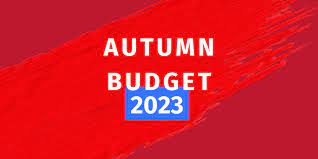
Unlocking Homeownership: Exploring The Benefits And Considerations Of Joint Borrower Sole Proprietor Mortgages
In an era where soaring property prices have created hurdles for aspiring homeowners, innovative solutions have emerged to help bridge the gap between dreams and reality. One such solution gaining traction is the Joint Borrower Sole Proprietor (JBSP) mortgage. Let’s dive into the world of JBSP mortgages, discovering how they offer a lifeline to potential buyers and the key things to consider.
What is a Joint Borrower Soles Proprietor Mortgage?
Imagine being able to combine your income with that of a trusted family member or friend to boost your mortgage affordability. The Joint Borrower Sole Proprietor mortgage allows precisely that. Designed as a specialist mortgage arrangement, this option empowers a homebuyer to enlist a loved one’s income without the need for a cash contribution. This can be a game-changer, especially for individuals in the early stages of their careers, who may anticipate rising incomes in the years to come.
Under this arrangement, the buyer is the sole proprietor of the property, meaning they legally own it. However, the added income of the joint borrower is factored into the mortgage application. This joint borrower assumes responsibility for mortgage payments if the buyer encounters financial difficulties, bolstering the buyer’s chances of loan approval.
Example
Emily is a young professional earning £25,000 annually, aiming to purchase a home. With the average UK house price around £285,000, Emily’s purchasing power appears limited. Enter the JBSP mortgage. By including her mother’s income of £45,000, Hannah’s total combined income becomes £70,000. This transformed income calculation allows her to potentially secure a mortgage of up to £315,000—£202,500 more than if she were applying on her own.
Key Considerations
- Financial Responsibility: Both buyer and joint borrower share mortgage repayment responsibility, enhancing the buyer’s ability to handle payments, especially during challenging times.
- Tax and Duty Advantages: The joint borrower doesn’t usually bear the burden of capital gains tax or the 3% stamp duty surcharge, as they’re not listed on the property deeds.
- Credit Check Requirements: All applicants must pass a credit check, potentially impacting the feasibility of utilizing a joint borrower’s income.
- Shared Liability: All parties on the mortgage application are liable for repayments, but only the buyer benefits from the property’s value.
- Potential Limitations: The age of the oldest party on the application can impact the mortgage term, affecting repayment amounts and options.
- Number of Applicants: Usually, a JBSP mortgage lender will assess a maximum of four applicants for a single JBSP mortgage. Generally, formal consideration is given to only two incomes, while any additional incomes are factored in as supplementary financial assurances.
- Loan Amount: The amount you can borrow will fluctuate based on individual applications and varying lender standards. For the most part, a JBSP mortgage accommodates up to four applicants, and many lenders impose a borrowing limit of around 4.5 times the collective income.
It’s important to understand when a joint borrower’s involvement might come to an end. This could happen when the homebuyer’s salary increases sufficiently, enabling them to afford the mortgage independently. Alternatively, if the relationship with the joint borrower sours, or if they pass away, the situation may necessitate property sale.
Ready to Explore Your Mortgage Choices?
Contemplating the idea of a Joint Borrower Sole Proprietor Mortgage? Before you embark on this financial journey, it’s crucial to assess the advantages and potential drawbacks thoroughly. While this mortgage avenue can offer an enticing path to homeownership, understanding its intricacies is key. To delve deeper into your needs and explore your options, get in touch with Oakwood Independent Mortgage Consultants:
Phone: 01202 587 555
Email: dean@oakwoodimc.com



